
Photonix is a photo management application based on various web technologies. Run it on your home server and it will let you find what you want from your photo collection using any device. Smart filtering is made possible automatically by object recognition, location awareness, color analysis and other algorithms. In this step by step guide I will show you how to install Photonix on your Synology NAS with Docker & Portainer.
STEP 1
Please Support My work by Making a Donation.
STEP 2
Install Portainer using my step by step guide. If you already have Portainer installed on your Synology NAS, skip this STEP. Attention: Make sure you have installed the latest Portainer version.
STEP 3
Go to File Station and open the docker folder. Inside the docker folder, create one new folder and name it photonix. Follow the instructions in the image below.
Note: Be careful to enter only lowercase, not uppercase letters.
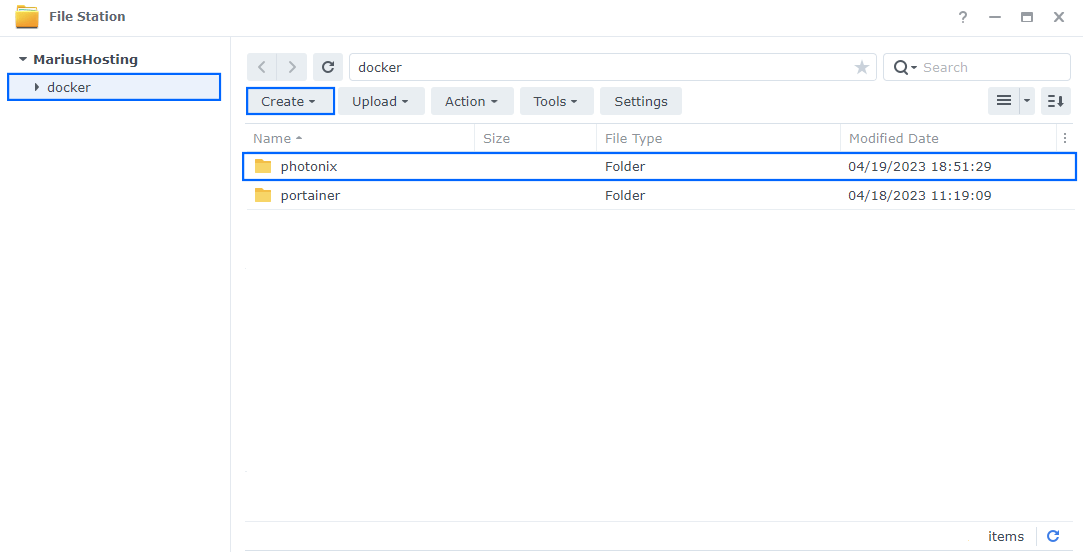
STEP 4
Now create five new folders inside the photonix folder that you created at STEP 3 and name them cache, db, models, raw, redis. Follow the instructions in the image below.
Note: Be careful to enter only lowercase, not uppercase letters.
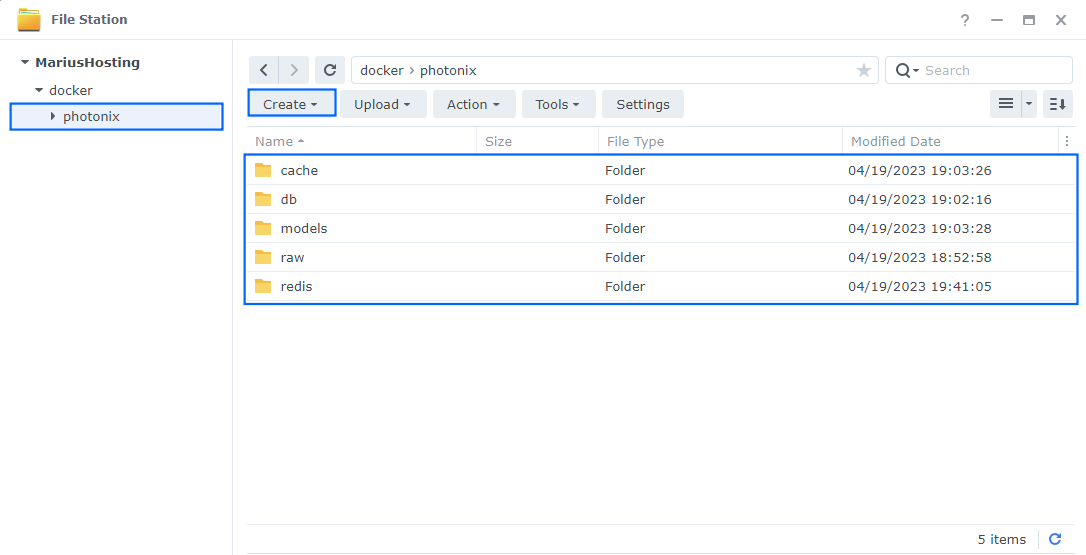
STEP 5
Log into Portainer using your username and password. On the left sidebar in Portainer, click on Home then Live connect. Follow the instructions in the image below.

On the left sidebar in Portainer, click on Stacks then + Add stack. Follow the instructions in the image below.

STEP 6
In the Name field type in photonix. Follow the instructions in the image below.
version: "3.9"
services:
photonixdb:
container_name: Photonix-DB
image: postgres
environment:
POSTGRES_USER: photonixuser
POSTGRES_DB: photonix
POSTGRES_PASSWORD: photonixpass
volumes:
- /volume1/docker/photonix/db:/var/lib/postgresql/data:rw
restart: on-failure:5
redis:
container_name: Photonix-REDIS
image: redis
volumes:
- /volume1/docker/photonix/redis:/data:rw
restart: on-failure:5
photonix:
container_name: Photonix
image: photonixapp/photonix
ports:
- 8506:80
environment:
ADMIN_USERNAME: marius
ADMIN_PASSWORD: mariushosting
PUID: 1026
PGID: 100
TZ: Europe/Bucharest
ENV: production
POSTGRES_HOST: photonixdb
POSTGRES_DB: photonix
POSTGRES_USER: photonixuser
POSTGRES_PASSWORD: photonixpass
REDIS_HOST: redis
ALLOWED_HOSTS: '*'
volumes:
- /volume1/web/photo:/data/photos:rw
- /volume1/docker/photonix/raw:/data/raw-photos-processed:rw
- /volume1/docker/photonix/cache:/data/cache:rw
- /volume1/docker/photonix/models:/data/models:rw
depends_on:
- photonixdb
- redis
restart: on-failure:5
Note: Before you paste the code above in the Web editor area, change the value for ADMIN_USERNAME and add your own username. marius is an example for a username. You have to insert your own username.
Note: Before you paste the code above in the Web editor area, change the value for ADMIN_PASSWORD and add your own password. mariusboosting is an example for a password. You have to insert your own password.
Note: Before you paste the code above in the Web editor area below, change the value numbers for PUID and PGID with your own values. (Follow my step by step guide on how to do this.) 1026 is my personal PUID value and 100 is my personal PGID value. You have to type in your own values.
Note: Before you paste the code above in the Web editor area below, change the value for TZ. (Select your current Time Zone from this list.)
Note: Before you paste the code above in the Web editor area below, change the photo volume path. You have to add your personal path to photos. NO spaces in the folder name and NO uppercase letters are allowed; use only lowercase letters.
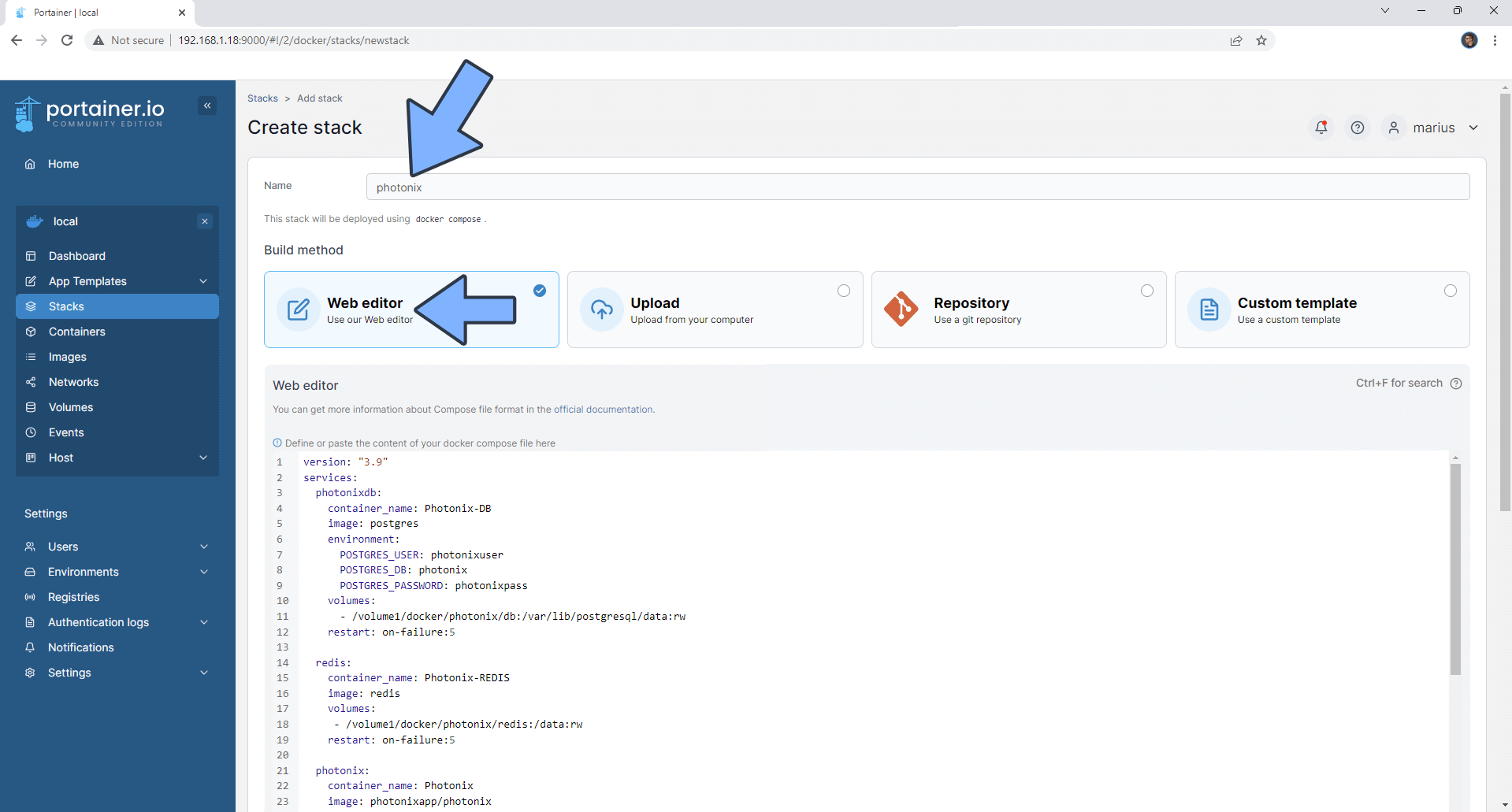
STEP 7
Scroll down on the page until you see a button named Deploy the stack. Click on it. Follow the instructions in the image below. The installation process can take up to a few minutes. It will depend on your Internet speed connection.
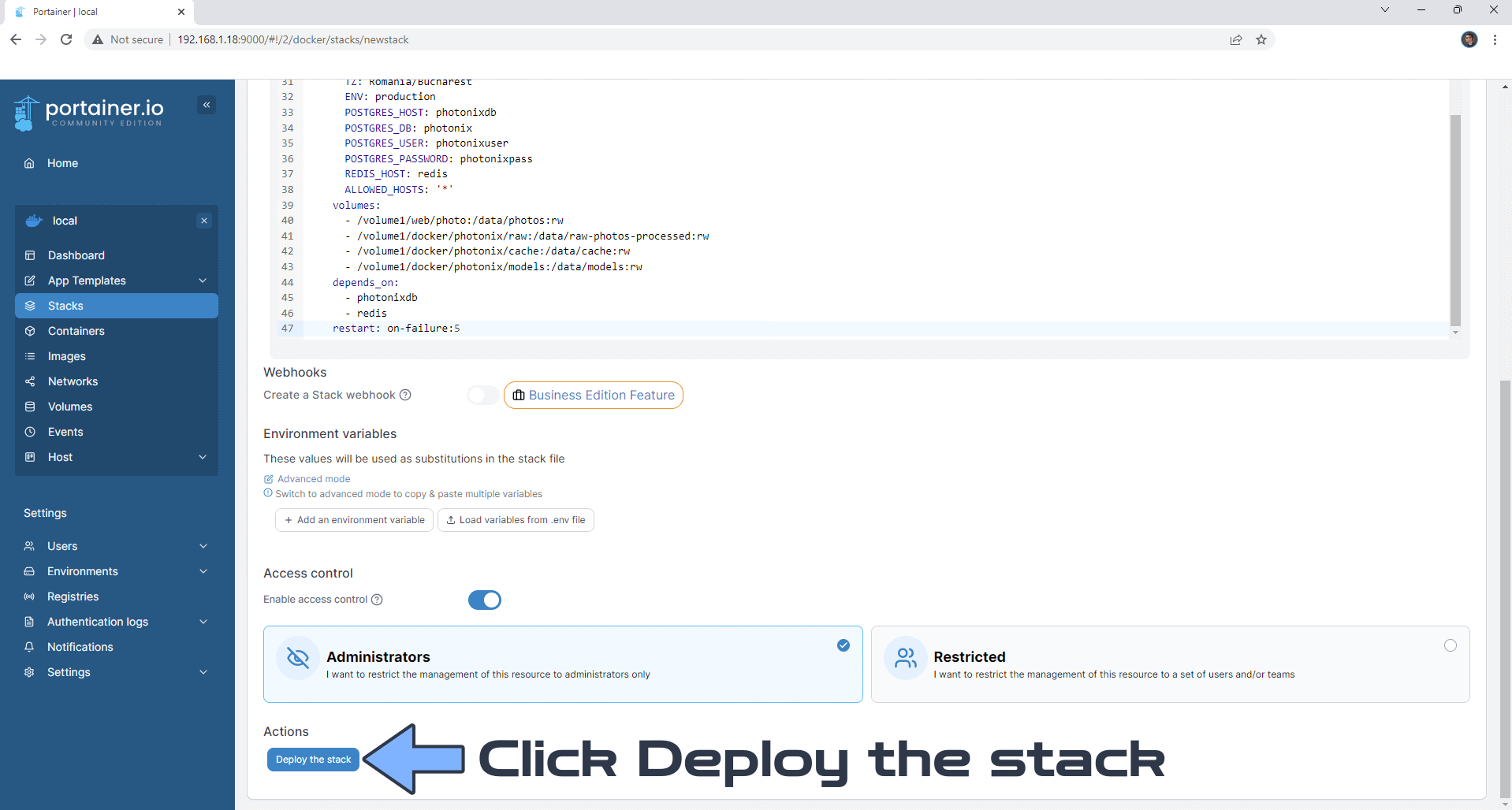
STEP 8
If everything goes right, you will see the following message at the top right of your screen: “Success Stack successfully deployed“.

STEP 9
🟢Please Support My work by Making a Donation. Almost 99,9% of the people that install something using my guides forget to support my work, or just ignore STEP 1. I’ve been very honest about this aspect of my work since the beginning: I don’t run any ADS, I don’t require subscriptions, paid or otherwise, I don’t collect IPs, emails, and I don’t have any referral links from Amazon or other merchants. I also don’t have any POP-UPs or COOKIES. I have repeatedly been told over the years how much I have contributed to the community. It’s something I love doing and have been honest about my passion since the beginning. But I also Need The Community to Support me Back to be able to continue doing this work.
STEP 10
The installation process can take up to a few seconds/minutes. It will depend on your Internet speed connection. Now open your browser and type in http://Synology-ip-address:8506 Give a name to the Library then select Local. Click Next. Follow the instructions in the image below.
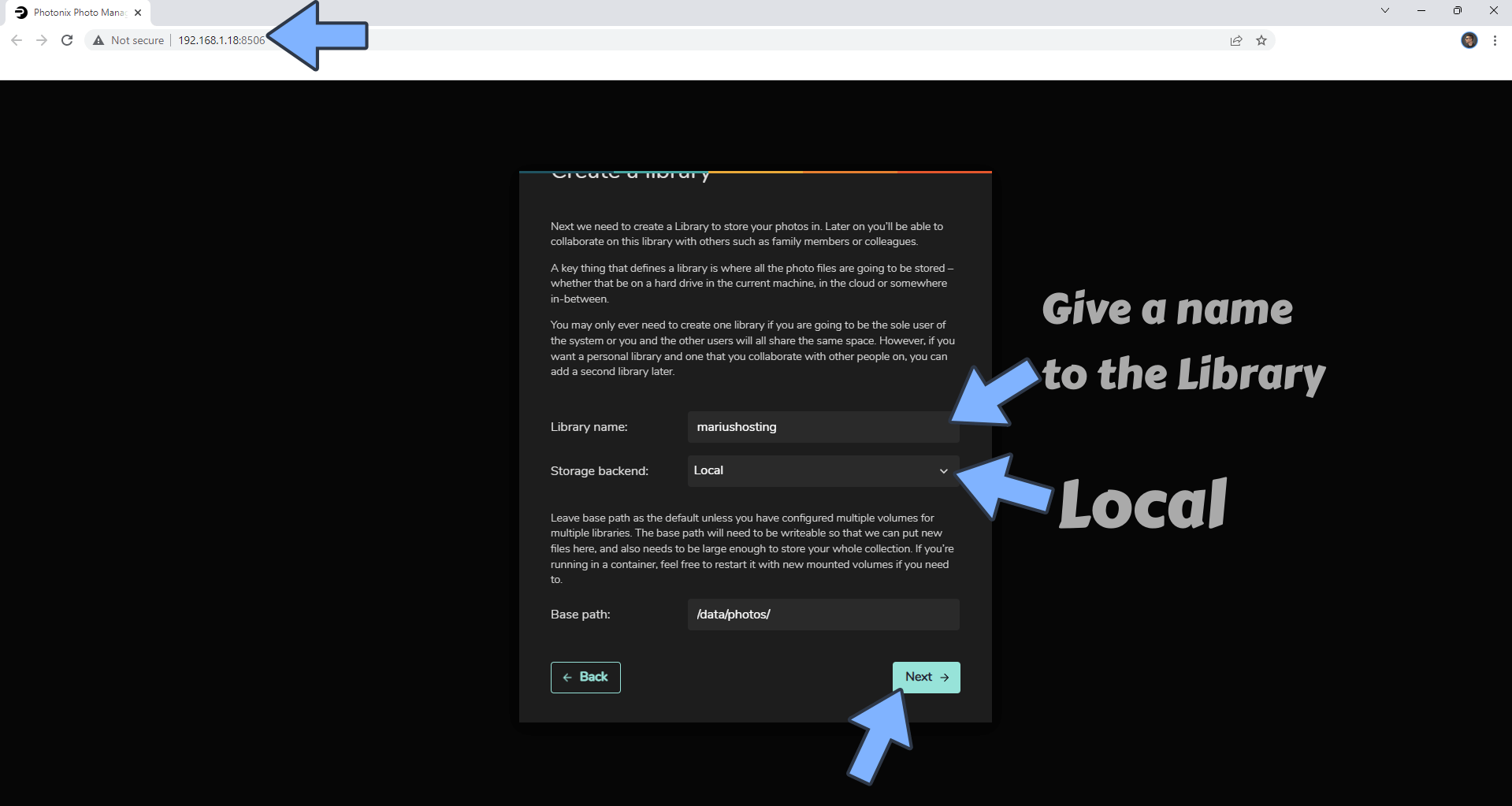
STEP 11
Turn on the Monitor base path for changes, then click Next. Follow the instructions in the image below.
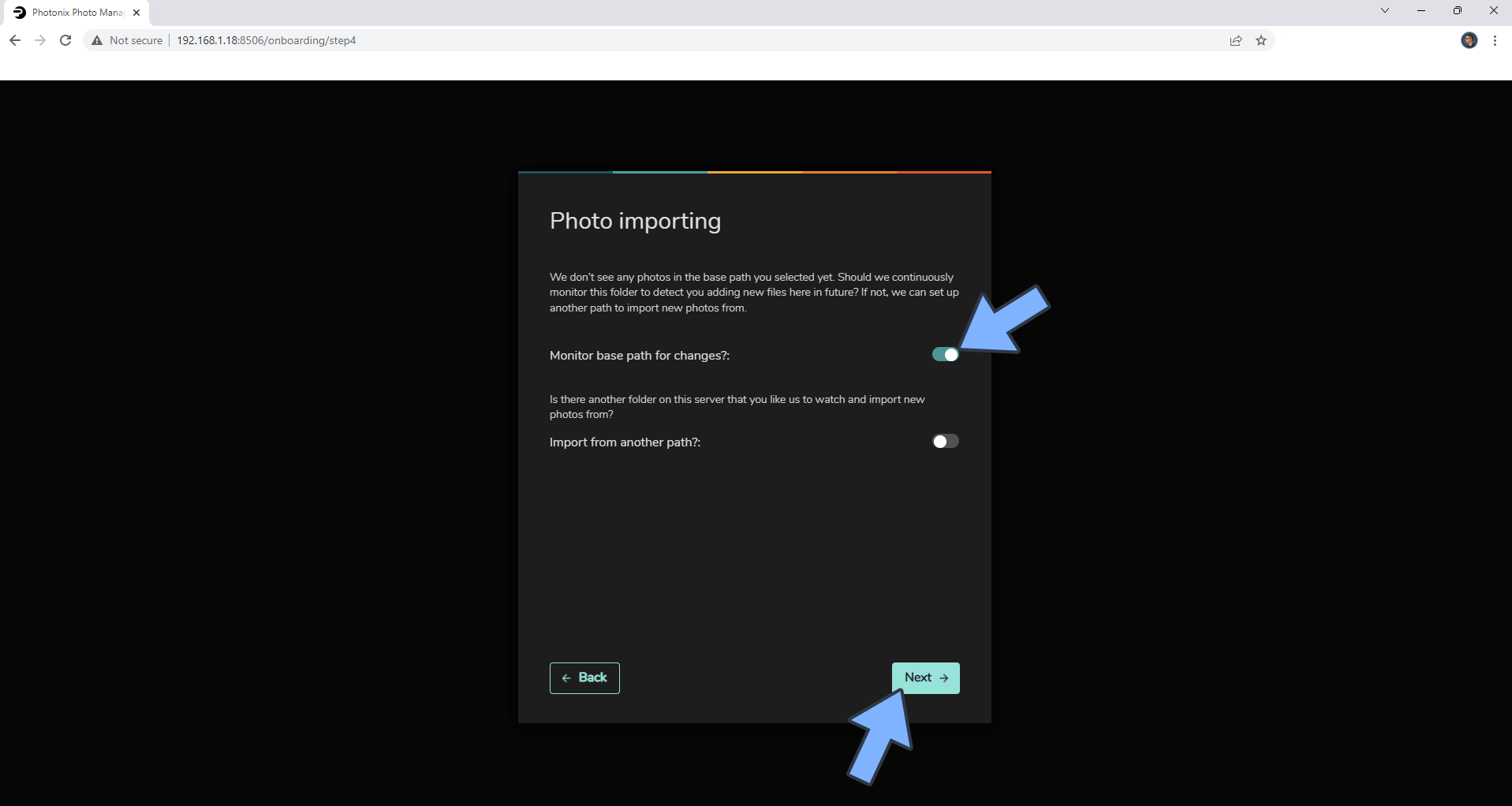
STEP 12
Select the options you want for image analysis, then click Next. ⚠️Warning: if you have a large volume of photos, the more options you add, the more it will slow down the first indexing.
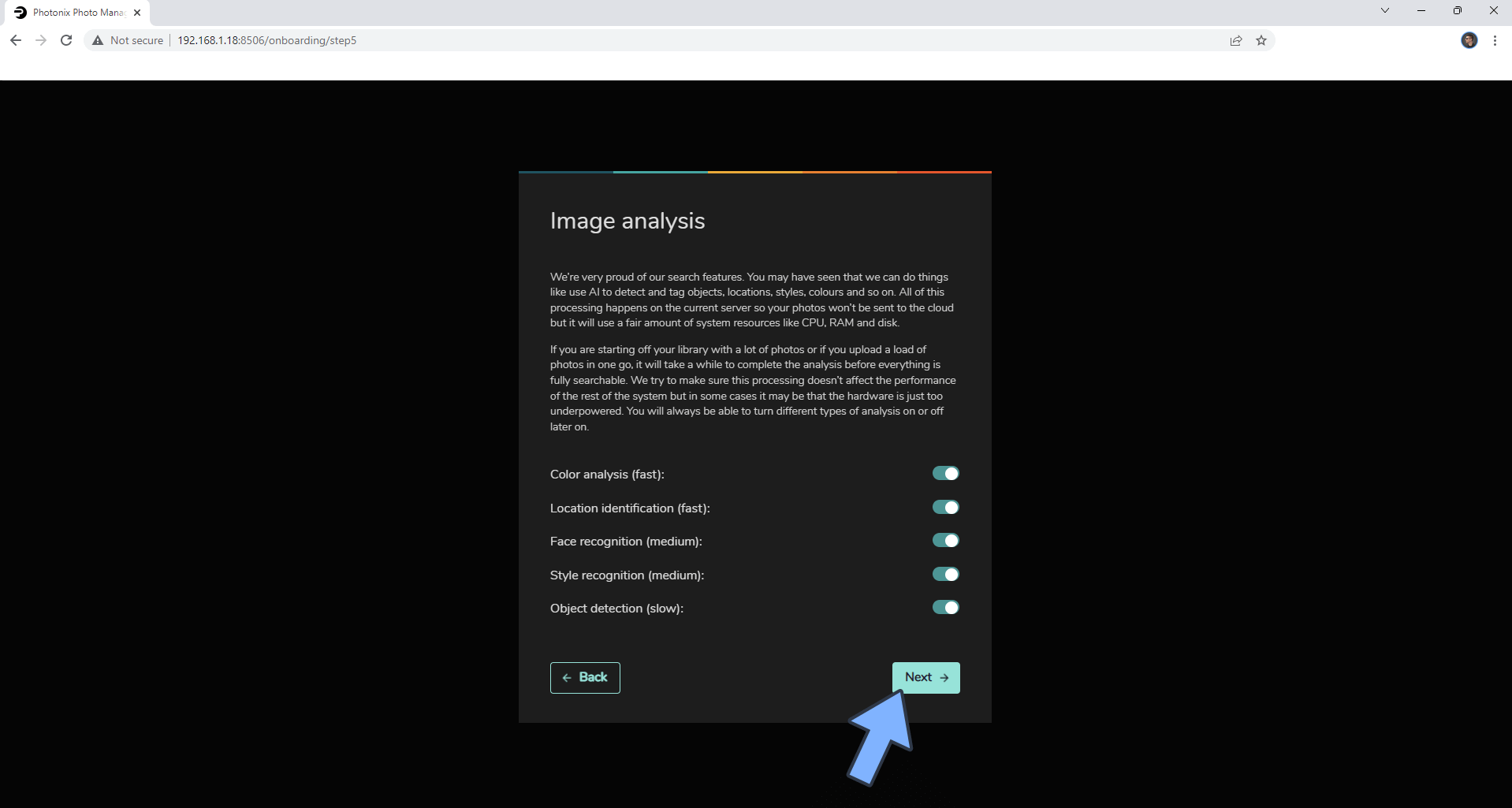
STEP 13
Type in your own Username and Password that you have previously chosen at STEP 6. Click Login. Follow the instructions in the image below.
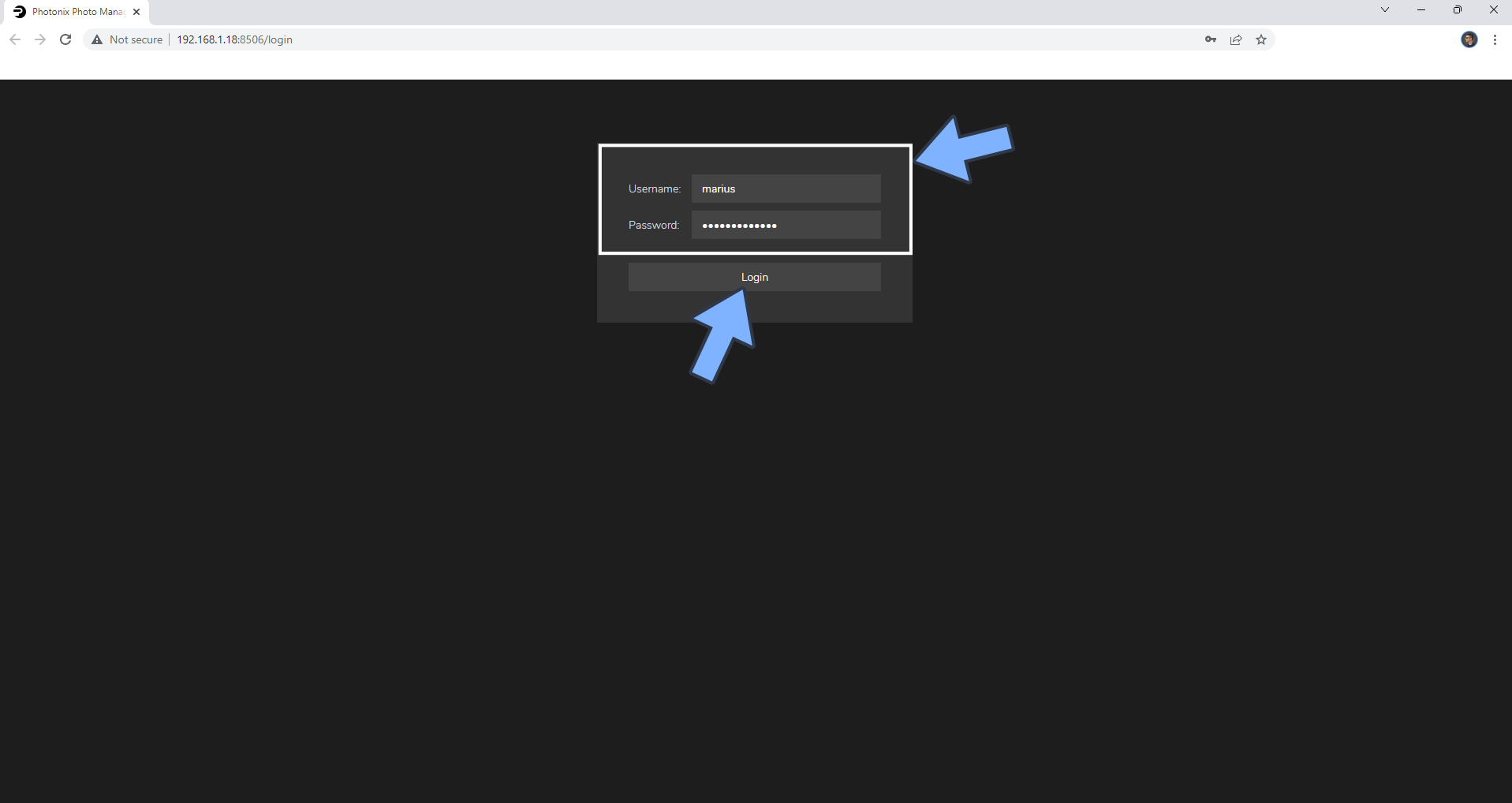
STEP 14
Depending on your volume storage and the image analysis options you have selected at STEP 12, it can take up to several hours or days to index all of your pictures.
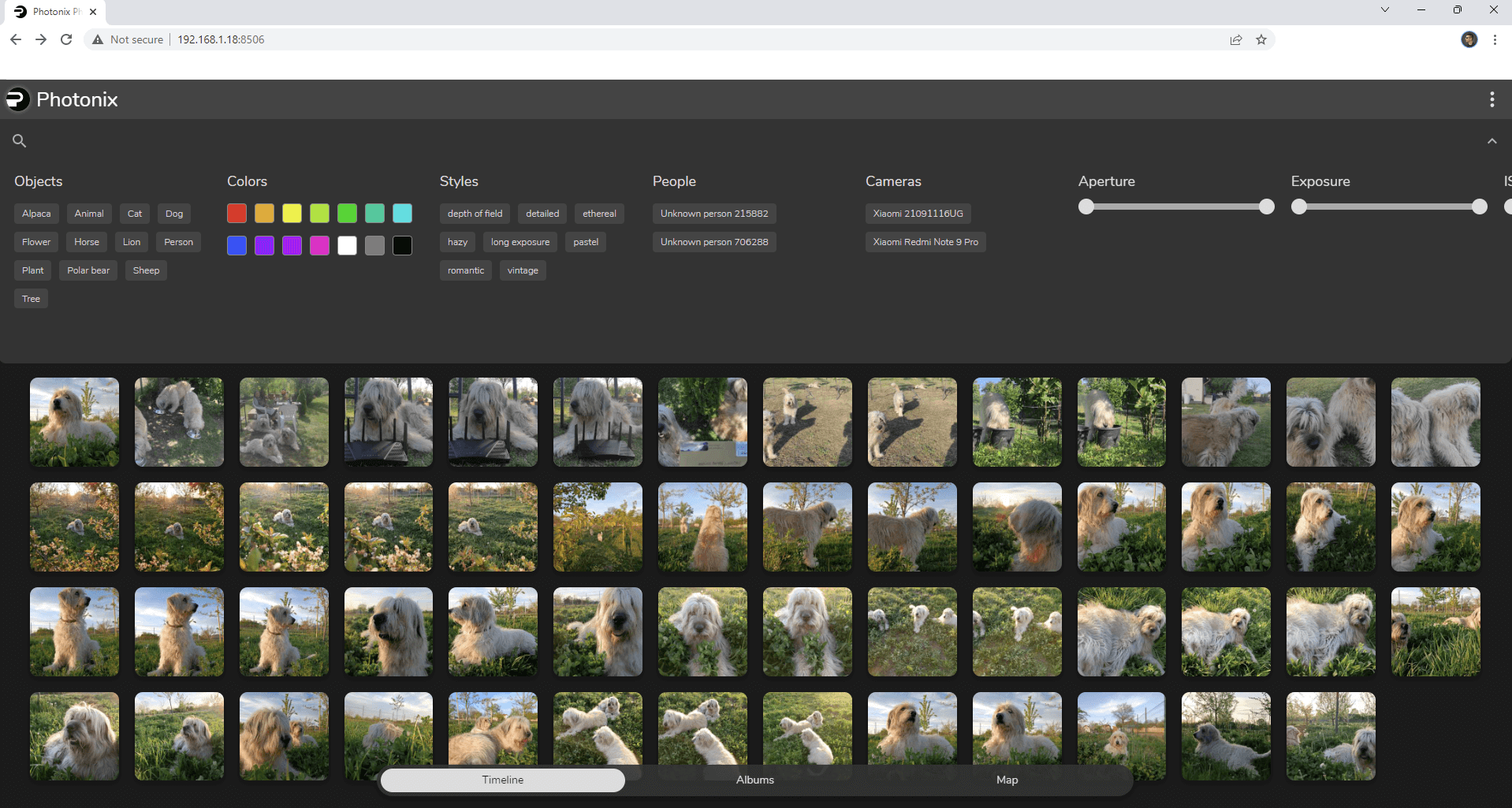
Enjoy Photonix!
If you encounter issues by using this container, make sure to check out the Common Docker issues article.
Note: If you want to run the Photonix container over HTTPS, check out my guide on How to Run Docker Containers Over HTTPS. In order to make Photonix work over https, it’s also mandatory to set up WebSocket.
Note: Can I run Docker on my Synology NAS? See the supported models.
Note: How to Back Up Docker Containers on your Synology NAS.
Note: Find out how to update the Photonix container with the latest image.
Note: How to Free Disk Space on Your NAS if You Run Docker.
Note: How to Schedule Start & Stop For Docker Containers.
Note: How to Activate Email Notifications.
Note: How to Add Access Control Profile on Your NAS.
Note: How to Change Docker Containers Restart Policy.
Note: How to Use Docker Containers With VPN.
Note: Convert Docker Run Into Docker Compose.
Note: How to Clean Docker.
Note: How to Clean Docker Automatically.
Note: Best Practices When Using Docker and DDNS.
Note: Some Docker Containers Need WebSocket.
Note: Find out the Best NAS Models For Docker.
Note: Activate Gmail SMTP For Docker Containers.
This post was updated on Friday / August 29th, 2025 at 6:17 PM
